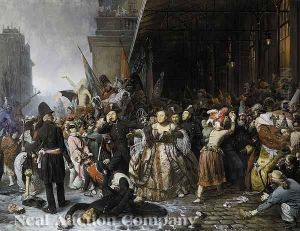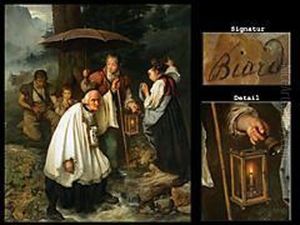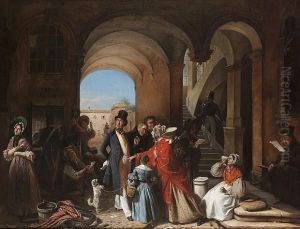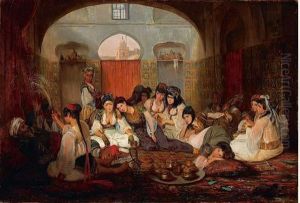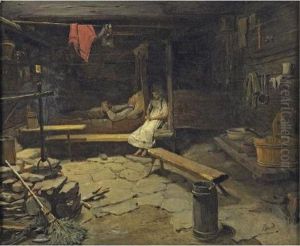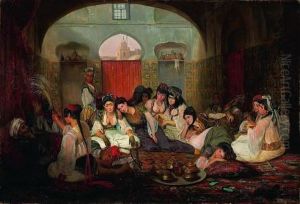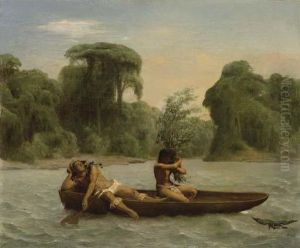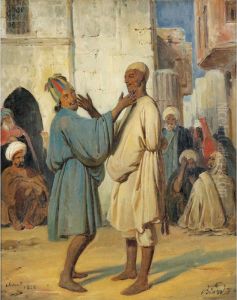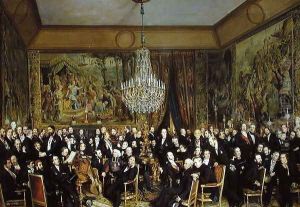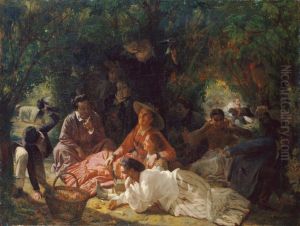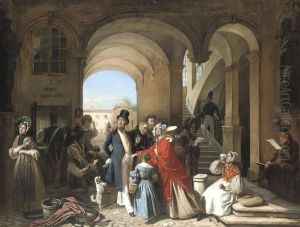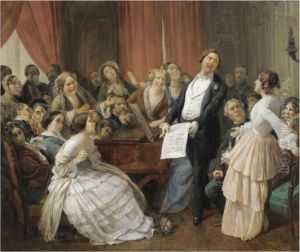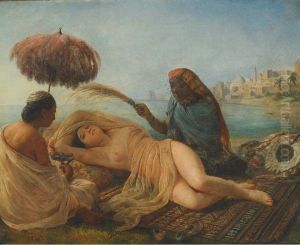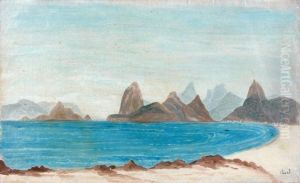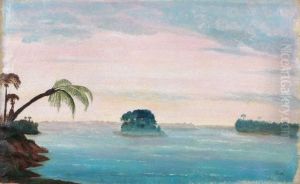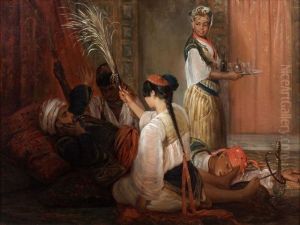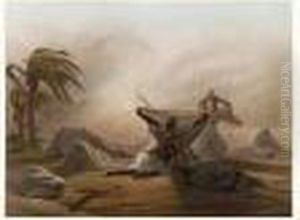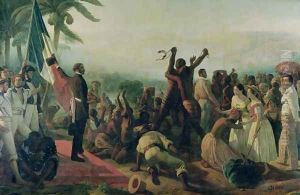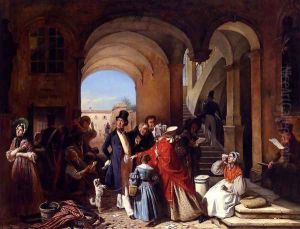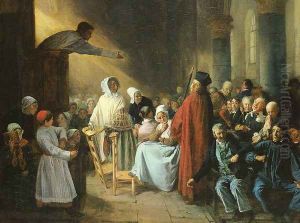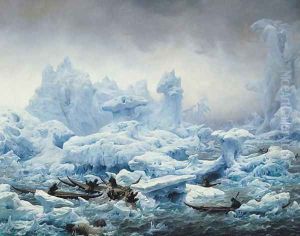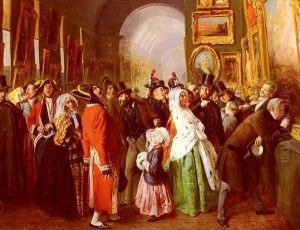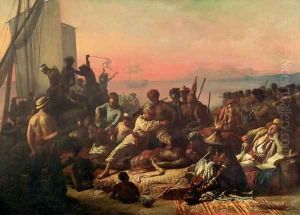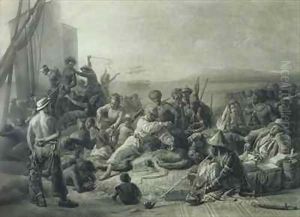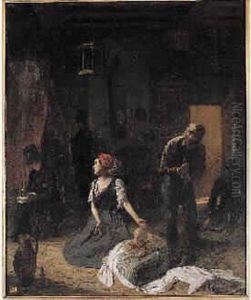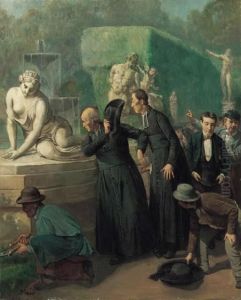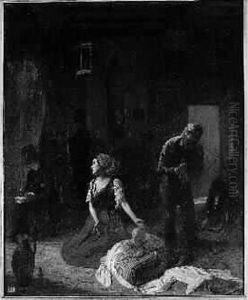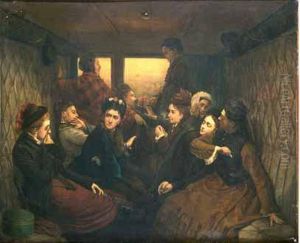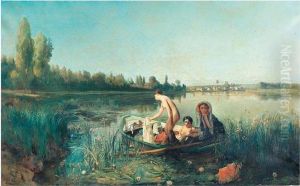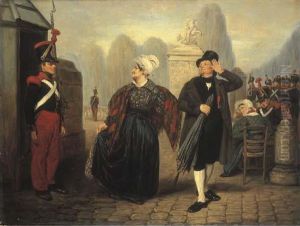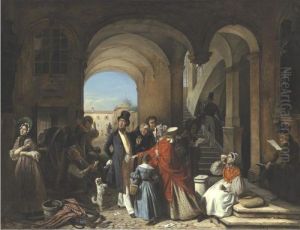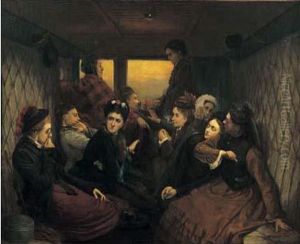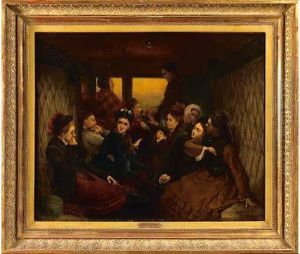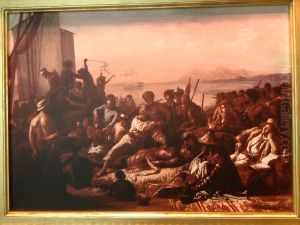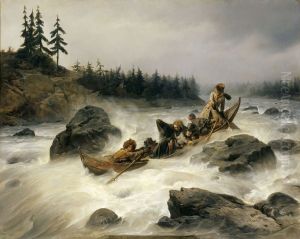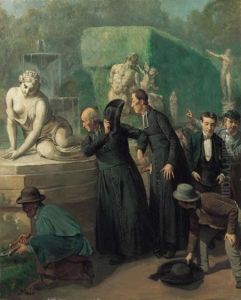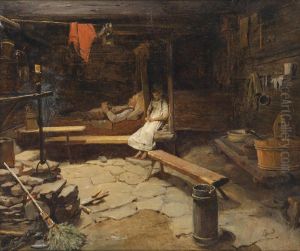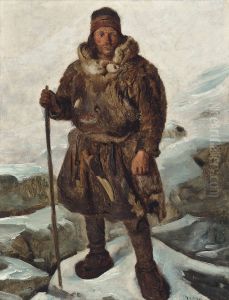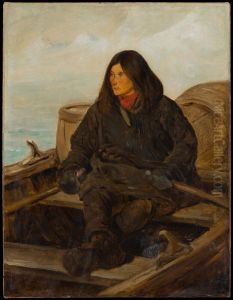Francois-Auguste Biard Paintings
François-Auguste Biard was a French painter known for his depictions of exotic locations, historical and genre scenes, as well as for his social satire. Biard was born on June 30, 1799, in Lyon, France. He showed an early talent for art and began his studies at the École des Beaux-Arts de Lyon before moving to Paris to further his education and career.
In Paris, Biard studied under renowned artists such as Antoine-Jean Gros and Jean-Baptiste Regnault. He began to exhibit at the Paris Salon, the official art exhibition of the Académie des Beaux-Arts, in 1824. Biard's works were well-received, and he quickly gained a reputation for his vivid portrayals and keen observation of human character.
One of his early notable works is 'Scene of the Massacre of the Innocents,' which he exhibited at the Salon in 1824. However, it was his travel paintings that brought him the most acclaim. Biard was an avid traveler, and his journeys took him to Scandinavia, Brazil, and the Arctic regions. His experiences during these trips were reflected in his artwork, often capturing the daily life of the local people, dramatic landscapes, and the dangers of exploration. For example, his 1840 painting 'Landing at Spitzbergen,' which is based on his Arctic expedition, depicts a dramatic encounter with a polar bear.
Biard was also known for his social commentary through his art. His 1833 work 'Slaves on the West Coast of Africa' condemns the slave trade and portrays the brutal treatment of enslaved people, reflecting his abolitionist views.
During his career, Biard received numerous honors, including the Legion of Honour in 1832. Despite his success, he faced financial difficulties in his later years. François-Auguste Biard died on June 20, 1882, in Fontainebleau, France. His works continue to be appreciated for their historical significance and their contribution to the Romantic movement in art.
